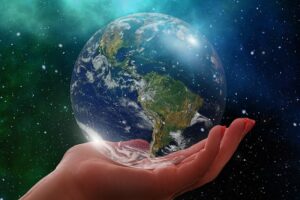Safety is a primary concern for anyone planning to move abroad, and South America has a reputation for both vibrant cultures and safety concerns.
However, it’s important to note that safety can vary from country to country. By understanding the safety situation in each country, you can choose the best destination that suits your needs and offers a sense of security.
In this article, we will explore the safest countries in South America, according to the 2023 Global Peace Index, giving you valuable insights to help you make an informed decision.
If you want to invest as an expat or high-net-worth individual, which is what i specialize in, you can email me (advice@adamfayed.com) or use WhatsApp (+44-7393-450-837).
Table of Contents
Is it safe to move to South America?
Simply put, traveling to South America is not dangerous. Some neighborhoods, however, are dangerous, and this is true all across the world.
Each country in South America has its own version of the dangerous neighborhoods back home, so tourists should use the same caution they would anywhere else in the continent.
These safety recommendations for South America should ease your mind if you are planning a trip there. Keep in mind that for every terrifying tale, thousands of people explore the continent without any problems at all. Relax and educate yourself.
The latest up-to-date version of the Global Peace Index lists no South American countries among the top 15 least peaceful nations. Most nations are safe to travel to without any special precautions, however there are few (like Colombia) that do require them.
Of course, before booking any trip, you should check the relevant government website for any current travel warnings or advisories. They might tell you to stay away from a certain South American country altogether, or at least warn you about traveling in certain provinces.
If your government has issued a warning against travel to a specific country and you decide to go there nonetheless, you may have trouble obtaining adequate travel insurance to cover your trip.
Factors to consider when determining safety for expats
When it comes to determining the safety of a country for expats, there are several factors to consider. These factors will not only give you an idea of the overall safety situation but also help you assess the specific risks and challenges you may encounter in each country.
One of the key factors to consider is the crime rate. This includes both violent crimes and property crimes.
High crime rates can make living in a country more dangerous and increase the risk of theft, assault, or other crimes. It’s important to research the crime rates in each country to get a better understanding of the safety situation.
Another important factor is political stability. Countries with unstable political situations can be more prone to civil unrest, protests, or even coups.
These events can potentially impact the safety of expats living in the country. It’s essential to consider the political stability of a country before making a decision to move there.
Healthcare quality is also a crucial factor to consider when assessing the safety of a country. Access to quality healthcare and medical facilities can greatly impact your safety and well-being as an expat.
It’s important to research the healthcare system in each country to ensure you will have access to necessary medical services.
Lastly, it’s essential to consider the overall safety perception among expat communities. Expats living in a particular country often have valuable insights and experiences that can help you gauge the safety situation.
Online forums, expat groups, and social media platforms can be great resources for connecting with expats and getting their perspectives on safety.
By taking these factors into account, you can make a more informed decision about which country in South America is the safest for expats.
What are the safest countries in South America in 2023?
These South American countries are exemplary examples of political stability and low rates of violent crime, and they score exceptionally well on the global peace index.
Anyone interested in traveling to or investing in Latin America or South America should familiarize themselves with this information.
From the bustling metropolises to the breathtaking landscapes, you will learn fascinating facts about each country. With this knowledge, you will be able to make informed decisions about which nations are best suited for your trips, investments, or both.
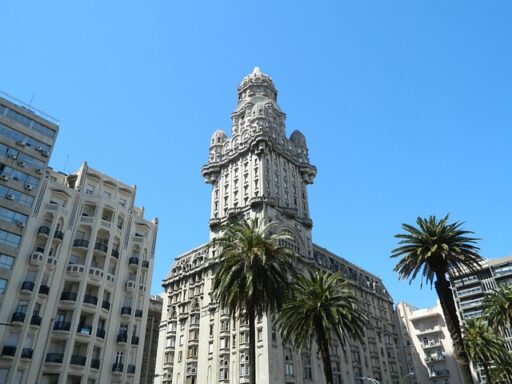
When making trip plans, financial investments, or just regular life decisions, knowing which countries are the safest is crucial.
We can evaluate the social, political, and economic variables that contribute to peace by measuring it on a global and national scale. The Global Peace Index is the most widely used index of national peacefulness, and it is compiled annually by the Institute for Economics and Peace.
National peace indicators have been devised to further probe the nature of peace at the regional and local levels. The Mexico Peace Index, United States Peace Index, United Kingdom Peace Index, and Germany Peace Index are just a few examples.
The Global Peace Index (GPI) is an informative Key Performance Indicator (KPI) that assesses countries throughout the world based on their level of peace, derived from a wide range of factors including political stability, rates of violent crime, international conflict, and societal safety, among others.
Using this all-encompassing rating, we can determine not only which Latin American countries, but which countries around the world, are the safest.
Many countries in South America score highly year after year on the Global Peace Index. Strong political stability, low rates of violent crime, and relatively mild civil upheaval characterize these nations.
Given their allure, many tourists, especially those concerned with security, are drawn there.
While the Global Peace Index (GPI) is an important resource for determining which South American countries are the safest for tourists, it is also important to keep up with current events, research travel insurance alternatives, and employ common street smarts to reduce exposure to threats like petty crime.
Uruguay
In 2023, Uruguay is the safest of any South American nation. Only Costa Rica ranks higher on the GPI among Latin American countries than Uruguay does.
Despite its huge popularity among tourists, Uruguay remains significantly less popular than its South American neighbors. Despite being one of South America’s smallest countries, there is still enough to see here.
Uruguay, with its stunning beaches and warm, welcoming people, is a great place to get away from it all without having to deal with the crowds. This area is fantastic for anyone who value wildlife observation because there is so much of it.
Uruguay’s location makes it relatively safe from sudden natural calamities. Tourists to the major cities should be on their guard against pickpockets, but violent crime is extremely rare.
Many people consider Uruguay to be the “coolest” nation in all of South America. Legalized gay marriage and recreational marijuana use have contributed to this trend.
It is one of the wealthiest countries in the region, and its residents seem to have a good relationship with their government, as 96% of them participate in democratic elections, which is more than can be said for the citizens of many other countries.
Uruguay is the greatest option in South America for a vacation free of worry and danger. Uruguay is one of the nicest places to live in South America, and you might find that you never want to leave.
Argentina
As the second-largest nation in South America, Argentina has a lot to offer visitors. This country is full of contrasts, from its natural beauty to its bustling cityscapes. There are many Americans living abroad and working as digital nomads in this country.
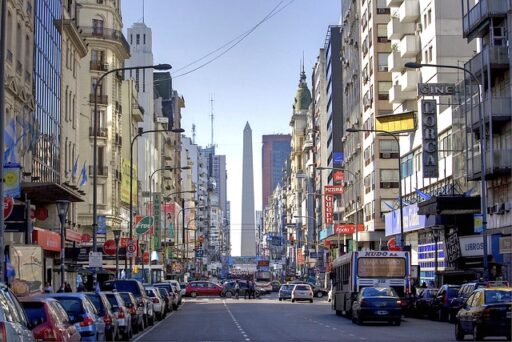
Some of the most breathtaking hikes in all of Argentina may be found in Patagonia. Argentina’s urban centers are full of life and color, but the country’s abundant wilderness offers welcome respite.
Though there is an increased risk of small crime in large urban areas, Argentina is still one of the safest South American countries to visit, even for lone travelers.
Hitchhiking is prevalent in Argentina, especially in Patagonia, though it helps to know some Spanish to communicate with locals. For your own protection, let someone know your destination before you start hitchhiking.
Although Dengue Fever is the greatest health risk to tourists in Argentina, it can be avoided by taking precautions against mosquito bites. Read this page for information on the dangers to your health in South America and the shots you will need to protect yourself. Fortunately, Argentina has a high-quality, universally accessible public health care system that is also free of charge.
Unfortunately, Argentina’s economy has been in decline in recent years, heightening concerns about fair treatment of all citizens. This means that demonstrations are happening more frequently.
While it is impossible to know for sure if things will escalate during a protest, visitors are wise to steer clear of them if at all possible.
Chile
Chile, as one of the continent’s most varied nations, is a fantastic travel destination for the brave at heart. Chile, (possibly*) the world’s longest country, spans ten distinct climate zones. As a result, it truly does cater to a wide variety of tastes.
Chile had been ranked the safest country in South America for years, but it fell dramatically in the 2020 Global Peace Index rankings and has not recovered.
Prior to the current civil upheaval and violent protests over rising living costs, inequality, and privatization, the country consistently ranked in the top 30 safest in the world.
However, Chile is one of the safest South American nations to visit due to its incredibly low crime rate. Use caution when backpacking, as you would with any other adventure.
If at all possible, avoid showing off big sums of cash and instead use a money belt or other means to conceal your assets. There are many tools available to make travel less dangerous, like a theft-proof backpack.
To a large extent, Chile’s exceptional quality of life may be attributed to the country’s advanced infrastructure and widespread access to the internet.
Accident-prone travelers should rest easy knowing that it boasts one of the best healthcare systems on the continent. But that is no excuse to skimp on travel insurance!
The possibility of earthquakes is one of the greatest dangers of traveling to Chile. The fast-moving Nazca Plate, which has a history of triggering major earthquakes, borders the country. Scientists constantly monitor plate activity and issue warnings to visitors so they can plan their trips accordingly.
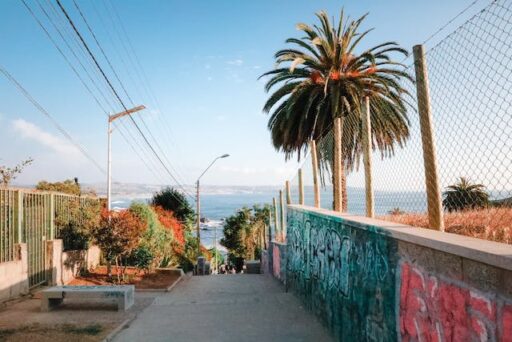
Paraguay
In terms of international visitors, Paraguay is still a relatively undiscovered destination. It is a terrific spot to visit because there is so much of the country to see. There is not a lot to worry about in terms of safety or crime rates across the country.
As is to be expected, small crime is possible, although it is typically avoidable if one takes reasonable safety measures. If you want to avoid being a target for pickpockets, do not wear flashy clothing or jewelry.
Tourists in Paraguay should be wary of the quality of the country’s roads. Many people in the area do not wear helmets when riding motorbikes or drive at night without lights, both of which can lead to serious injuries or death. Road signs are viewed more as suggestions than mandatory directives, much as they are in Vietnam.
Paraguay is a great tourist destination since it is less expensive than neighboring Brazil and Argentina. Paraguay may not be the cheapest South American country (that honor goes to Bolivia), but it offers remarkable value for the money.
Bolivia
Bolivia has been steadily climbing the GPI safety rankings over the past several years, making the list for the first time in 2022 and moving up a few spots in the 2023 edition.
Travelers come to Bolivia annually because of the wonderful natural beauty of the country and because it is possibly the cheapest country in all of South America. Pictures taken on a trip to Bolivia at the country’s famous salt flats are required viewing upon return.
The majority of Bolivia is situated in the Andes, making it an ideal destination for hikers. However, there is a danger in doing so because many urban areas are situated on high ground.
Travelers can take precautions against altitude sickness by giving themselves plenty of time to acclimate before venturing too high. Although some travelers find relief from altitude sickness drugs, these medications often come with unpleasant negative effects.
Travelers are advised to exercise extreme caution if they decide to visit the El Alto neighborhood near La Paz. As is the case in most large urban areas, pickpocketing and other forms of small crime are more common in places like these.
Do not miss the thrilling chance to ride your bike down Death Road while you are out in the country. Although it still has a scary sounding name, modern hikers should know that it is actually lot safer than it was in the past. Still, just in case, check that your travel insurance includes coverage for extreme sports.
Drinking the tap water in Bolivia is not an option, and it can be difficult to locate refills for free, as is the case in many other South American countries. Invest in a filtered water bottle to rid yourself and the earth of harmful contaminants.
Ecuador
Ecuador is surprisingly rich in biodiversity for such a small country. Ecuador has a beautiful coastline and is home to some of the world’s most unusual and exotic animals thanks to its proximity to the Amazon Rainforest, the Andes, and the spectacular Galápagos Islands.
Ecuador is located on the ‘ring of fire,’ a zone known for high rates of seismic activity. This means that natural disasters like as earthquakes, tsunamis, and volcanic eruptions can occur.
In the event of an emergency, you should be familiar with the proper evacuation and safety measures. The majority of tourists should not experience any problems despite the fact that this may sound scary at first.
While major cities like Quito and Guayaquil do have higher rates of small crime, Ecuador as a whole is a fairly secure place to travel. Keep your valuables out of sight to avoid being a target for pickpockets in the main cities.
The Galápagos Islands are unquestionably the most secure tourist destination in all of Ecuador. Since there are so few people living on the islands, crime is extremely rare. Keep in mind, though, that there are some active volcanoes on these islands.
Protests have occurred on a national scale in Ecuador in recent years. Several people lost their lives because some of them turned aggressive.
Stay away from demonstrations of any kind to be on the safe side. Despite this, in 2022, Ecuador’s position on the GPI improved by nine places. A trip to this remarkable nation could not come at a better moment.
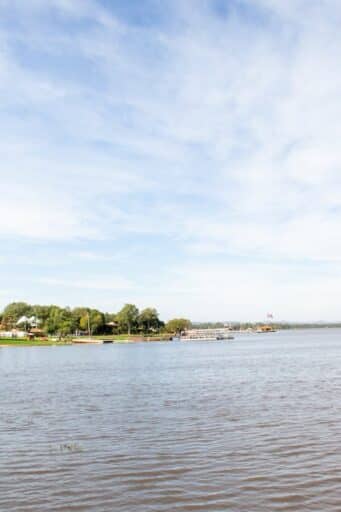
Safety precautions for expats living in South America
While the safest countries in South America offer a higher level of security for expats, it’s still important to take certain safety precautions to ensure your well-being. Here are some essential safety tips for expats living in South America:
- Be aware of your surroundings: Pay attention to your surroundings and avoid walking alone in unfamiliar or unsafe areas, especially at night. Stay vigilant and trust your instincts.
- Research local laws and customs: Familiarize yourself with the local laws and customs of the country you’re living in. This will help you avoid any legal trouble and ensure you respect the local culture.
- Secure your belongings: Keep your belongings secure and be cautious of pickpockets or theft. Avoid displaying expensive items or wearing flashy jewelry in public.
- Use reliable transportation: When using public transportation, opt for reputable services and avoid using unofficial taxis. If possible, consider using ride-sharing apps for added safety.
- Stay connected with the expat community: Join expat groups and networks to stay connected with the community. They can provide valuable insights, support, and advice on safety matters.
By following these safety precautions, you can enhance your security and enjoy a worry-free expat experience in South America.
Understanding the safety concerns in South America
South America is a continent with incredible natural beauty and a wide range of cultural experiences. However, it’s also important to understand the safety concerns that come with traveling in this part of the world.
While most areas are generally safe for tourists, it’s essential to be aware of certain risks and take precautions accordingly.
One of the primary safety concerns in South America is petty theft. Pickpocketing and bag snatching incidents can occur in crowded areas, tourist hotspots, and public transportation.
It’s crucial to stay vigilant and keep your belongings secure at all times. Additionally, some cities have higher crime rates than others, so it’s advisable to research and be aware of the safety situation in the specific areas you plan to visit.
Another safety concern in South America is the risk of natural disasters. The continent is prone to earthquakes, volcanic eruptions, and tropical storms.
Before traveling, it’s important to stay updated on any potential risks and have a plan in place for emergencies. Familiarize yourself with the local emergency services and follow any guidance or warnings provided by authorities.
Overall, by being aware of the safety concerns and taking necessary precautions, you can minimize risks and have a safe and enjoyable experience in South America.
Researching and planning your trip
Before embarking on your South American adventure, thorough research and planning are crucial for your safety.
Start by researching the countries and cities you plan to visit. Understand the political situation, current events, and any travel advisories issued by your government. This information will help you make informed decisions and avoid potential risks.
When selecting accommodations, choose reputable hotels or guesthouses with good reviews. Consider the location, safety measures, and access to transportation. It’s advisable to book accommodations in advance to ensure availability and avoid any last-minute hassles.
Additionally, familiarize yourself with the local transportation options. South America has a variety of transportation modes, including buses, taxis, and trains. Research the most reliable and safe options, and be cautious when using public transportation at night or in unfamiliar areas.
Lastly, ensure you have the necessary travel documents and insurance coverage. Check the visa requirements for each country you plan to visit, and make sure your passport is valid for at least six months beyond your planned departure date.
It’s also wise to purchase travel insurance that covers medical emergencies, trip cancellations, and lost belongings.
By conducting thorough research and planning ahead, you can minimize potential risks and enjoy a smoother travel experience in South America.
Safety tips for transportation and navigating cities
Transportation and navigating cities can pose specific safety challenges for expats in South America. However, with some precautions and awareness, you can navigate through unfamiliar territories effectively.
When using public transportation, be cautious of your surroundings and keep an eye on your belongings. Avoid displaying expensive items or large amounts of cash, as this can attract unwanted attention.
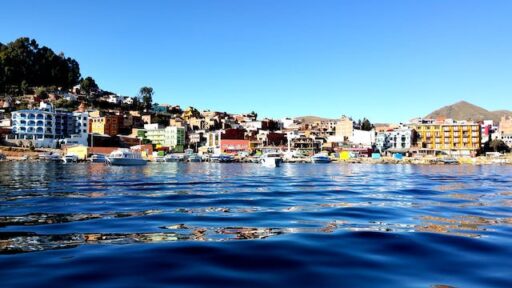
If possible, use reputable taxi services or rideshare apps instead of hailing taxis on the street. Before getting into a taxi, ensure it has proper identification and that the driver appears legitimate.
When walking around cities, be mindful of your surroundings and avoid poorly lit areas or deserted streets, especially at night. Stick to well-populated areas and consider using a map or GPS to navigate.
It’s also advisable to inform someone trustworthy about your whereabouts, especially if you’re going to an unfamiliar area.
If you plan on driving in South America, familiarize yourself with local driving laws and customs. Be aware that traffic can be chaotic and road conditions may vary. It’s essential to exercise caution, follow traffic rules, and avoid driving at night if possible.
Staying safe in tourist areas and popular attractions
Tourist areas and popular attractions in South America can be crowded and attract pickpockets and scammers. Here are some safety tips to ensure a safe and enjoyable experience in these areas.
Firstly, keep your belongings secure at all times. Use a money belt or a secure bag that can’t be easily accessed. Avoid carrying large amounts of cash and keep important documents, such as your passport, in a safe place. It’s also advisable to make copies of essential documents and store them separately.
Secondly, be cautious of strangers who approach you with unsolicited offers or assistance. Scammers may try to distract you or deceive you into a scam, such as fake tours or overcharging for services. Be skeptical and trust your instincts. If something feels off or too good to be true, it probably is.
Thirdly, be mindful of your personal space in crowded areas. Keep an eye on your belongings and be aware of your surroundings. Avoid exposing valuable items, such as cameras or smartphones, in public places. It’s also advisable to use a lock or a secure strap for your bags or backpacks.
Lastly, follow any safety guidelines or instructions provided at popular attractions. Some sites may have specific rules to ensure visitor safety. For example, certain hiking trails may require a guide or have restricted access during certain hours.
Communicating effectively in South America
Effective communication is essential for navigating through South America and ensuring your safety. While English is spoken in some tourist areas, it’s advisable to learn some basic phrases in the local language to enhance your travel experience and communicate in case of emergencies.
Learning a few key phrases, such as greetings, asking for directions, and basic numbers, can go a long way in establishing rapport and navigating through everyday situations. Locals often appreciate the effort and may be more willing to assist you if they see you trying to communicate in their language.
In addition to learning the language, it’s advisable to have a reliable means of communication.
Purchase a local SIM card or consider using an international roaming plan to ensure you have access to phone and internet services. This will allow you to stay connected, access maps, and contact emergency services if needed.
Finally, be mindful of cultural differences in communication styles. Non-verbal cues and gestures may vary across countries, and certain topics may be considered sensitive or taboo. Respect local customs and adapt your communication style accordingly.
Cultural awareness and respect for local customs
Cultural awareness is key to having a respectful and safe experience in South America. Each country has its unique customs, traditions, and social norms. Here are some tips to help you navigate cultural differences and show respect to the local culture.
Dress appropriately according to the local customs and traditions. Some places may have conservative dress codes, especially religious sites or rural areas. It’s important to respect these customs and avoid wearing revealing or inappropriate clothing.
Be mindful of your behavior and actions. Pay attention to the local customs regarding greetings, personal space, and gestures.
For example, in some countries, it’s common to greet with a kiss on the cheek, while in others, a handshake is more appropriate. Observe and follow the lead of locals to avoid any unintentional offense.
Always be respectful when taking photographs. Always ask for permission before taking pictures of people, especially in indigenous communities or religious sites. Some places may have restrictions on photography, so it’s important to respect these rules.
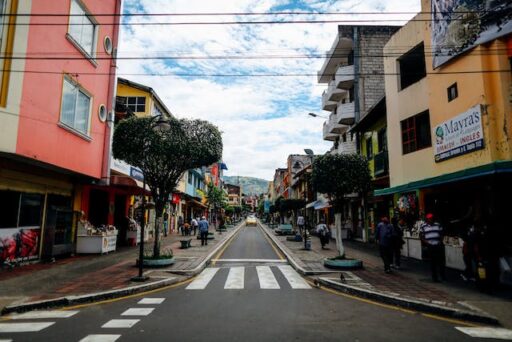
Don’t forget, be open-minded and embrace the local culture. Try traditional foods, attend local festivals, and engage in cultural activities. Showing genuine interest and respect for the local customs can lead to meaningful interactions and enhance your travel experience.
Protecting your belongings and avoiding scams
Protecting your belongings and avoiding scams is essential to ensuring a safe and hassle-free experience in South America. Here are some tips to help you safeguard your valuables and avoid falling victim to common scams.
Minimize the amount of cash and valuables you carry with you. Use a money belt or a secure bag to keep your essentials close to your body. It’s also advisable to keep a backup credit card and some cash in a separate location, such as your accommodation safe.
Be cautious of your surroundings and avoid displaying expensive items, such as flashy jewelry or designer accessories. These can attract unwanted attention and make you a target for theft. It’s wise to blend in with the locals and avoid drawing unnecessary attention to yourself.
As mentioned, you should be aware of common scams targeting tourists. These can include fake police officers, overcharging for services, or distraction techniques to steal your belongings.
Be skeptical of unsolicited offers or assistance from strangers, and always verify the legitimacy of any service or tour before paying or providing personal information.
Lastly, secure your belongings when staying in accommodations. Use the provided safety deposit boxes or secure your bags with a lock. It’s also advisable to keep important documents, such as your passport and travel insurance, in a safe place.
Emergency preparedness and staying connected
Emergencies can happen anywhere, and it’s important to be prepared and stay connected while traveling in South America. Here are some tips to help you handle emergencies and ensure your safety.
Have a plan in place for emergencies. Familiarize yourself with the local emergency contact numbers, such as the police, ambulance, and fire department. Keep a list of these numbers handy and know how to describe your location in case of an emergency.
Consider purchasing travel insurance that covers medical emergencies and evacuation. Accidents and illnesses can happen unexpectedly, and having adequate insurance coverage will provide you with peace of mind and necessary assistance when needed.
Stay connected with your loved ones and inform them about your travel plans. Share your itinerary, contact details, and accommodations with a trusted friend or family member. Regularly check in with them to let them know you’re safe and update them on any changes in your plans.
Another note is to familiarize yourself with the nearest embassy or consulate in each country you visit. They can provide valuable assistance in case of emergencies, such as lost passports or legal issues. Keep their contact information and address handy at all times.
Conclusion
Especially for expats moving to a new country is a significant decision, and safety is a crucial factor to consider.
By understanding the safety situation in each country, considering important factors such as crime rates, political stability, healthcare quality, and expat communities, you can make an informed decision and find the perfect safe haven for expats in South America.
Uruguay, Argentina, Bolivia, Paraguay, and Ecuador are just a few examples of the safest countries in South America.
Each country offers its own unique advantages, cultural experiences, and attractions. By following essential safety precautions, utilizing available resources, and joining expat communities, you can enhance your security and enjoy a fulfilling expat life in South America.
Whether you’re drawn to the vibrant streets of Buenos Aires, the stunning landscapes of Patagonia, or the rich cultural heritage of Ecuador, South America has something to offer for every expat seeking safety, adventure, and a new chapter in their lives.
Pained by financial indecision? Want to invest with Adam?

Adam is an internationally recognised author on financial matters, with over 760.2 million answer views on Quora.com, a widely sold book on Amazon, and a contributor on Forbes.

